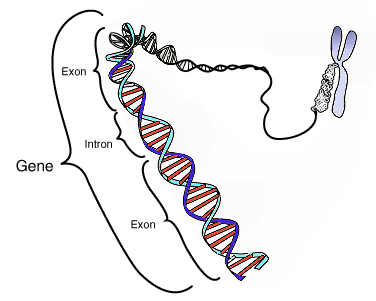 From a new Royal Society paper , by Arto Annila and Keith Baverstock, “Genes without prominence: a reappraisal of the foundations of biology” (J. R. Soc. Interface May 6, 2014 11 94 20131017; 1742-5662):
From a new Royal Society paper , by Arto Annila and Keith Baverstock, “Genes without prominence: a reappraisal of the foundations of biology” (J. R. Soc. Interface May 6, 2014 11 94 20131017; 1742-5662):
Abstract: The sequencing of the human genome raises two intriguing questions: why has the prediction of the inheritance of common diseases from the presence of abnormal alleles proved so unrewarding in most cases and how can some 25 000 genes generate such a rich complexity evident in the human phenotype? It is proposed that light can be shed on these questions by viewing evolution and organisms as natural processes contingent on the second law of thermodynamics, equivalent to the principle of least action in its original form. Consequently, natural selection acts on variation in any mechanism that consumes energy from the environment rather than on genetic variation. According to this tenet cellular phenotype, represented by a minimum free energy attractor state comprising active gene products, has a causal role in giving rise, by a self-similar process of cell-to-cell interaction, to morphology and functionality in organisms,which, in turn, by a self-similar process entailing Darwin’s proportional numbers are influencing their ecosystems. Thus, genes are merely a means of specifying polypeptides: those that serve free energy consumption in a given surroundings contribute to cellular phenotype as determined by the phenotype. In such natural processes, everything depends on everything else, and phenotypes are emergent properties of their systems.
From the conclusion:
5. Conclusion
The thermodynamic tenet presented here represents a major departure from conventional thought on the basis for evolution and its products. It refocuses, for purely physical reasons concerning the role of energy in the natural process called life, attention on the role of metabolic processes and, therefore, proteins, rather than DNA, and the cytoplasm, rather than the cell nucleus. First and foremost, themodel is based on the physics of dissipative systems, fully embracing the implications at the molecular level of thermodynamic openness and the quest of attaining stationary status of the cell/organism/ecosystem with its surroundings in least time. A supreme law of physics governs the life process, namely the law of least action equivalent to the second law and has, through the former harnessing natural selection and the latter being responsible for producing entropy in the form of bound energy (matter), resulted in the diversity of organisms extinct and extant. …
But isn’t the penalty for blasphemy against the selfish gene career death?
Phys.org reports,
What is the essence of the reformulation?
At the most fundamental level organisms are energy-consuming systems and the appropriate foundation in physics is that of complex dissipative systems. As energy flows in and out and within, the complex molecular system called the cell, fundamental physical considerations, dictated by the 2nd law of thermodynamics, demand that these flows, called actions, are maximally efficient (follow the path of least resistance) in space and time. Energy exchanges can give rise to new emergent properties that modify the actions and give rise to more new emergent properties and so on. The result is evolution from simpler to more complex and diverse organisms in both form and function, without the need to invoke genes. This model is supported by earlier computer simulations to create a virtual ecosystem by Mauno Rönkkö of the University of Eastern Finland. More.
It’s getting a lot of play in the medical science press because it basically says, among other things, you are not your genes. Thoughts?
Follow UD News at Twitter!